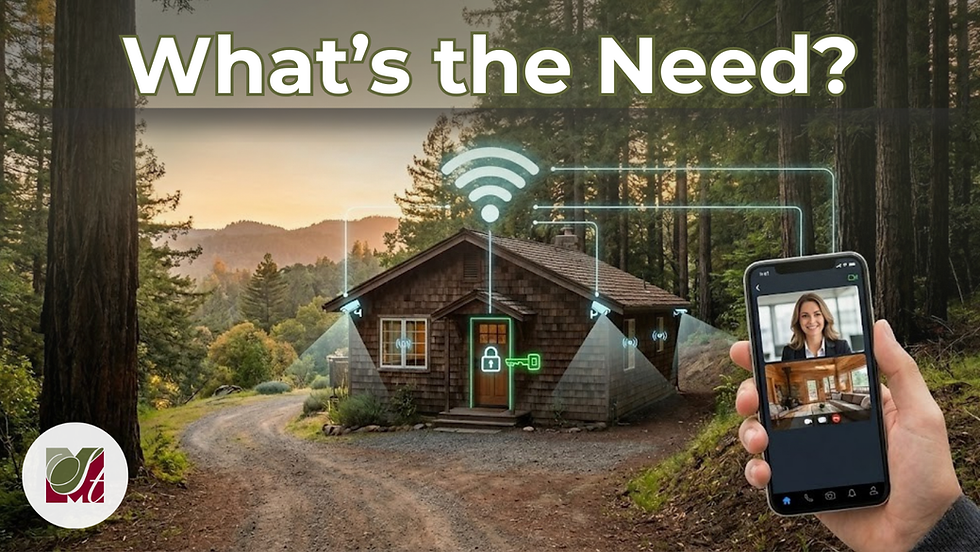A Tale of Two Cities
- Datta Khalsa

- Aug 28, 2017
- 3 min read
When I moved here in 1992, Santa Cruz was still recovering from the effects of the Loma Prieta earthquake:
Many of the downtown merchants were still operating out of the temporary “Tent City” that was erected in the wake of the widespread destruction in and around Pacific Garden Mall. Most of the houses that I toured as a young agent back then had the tell-tale diagonal cracks in the sheetrock over their doorways, and those with fireplaces generally had that characteristic break at the shoulder of their chimneys that served as a reminder of the 7.2 magnitude jolt that had hit the area.
The town was also recovering from the economic crash of 1989, which had actually preceded the earthquake by several months, with the earthquake serving as the final knockout punch that landed Santa Cruz on their list of beleaguered Counties where FEMA poured in many Millions of dollars in repairs and low-interest loans to help struggling homeowners get their lives back in order.
Housing prices reflected the crippled economy, and although I was just starting out and didn’t have enough money to buy anything at the time, I am still reminded every time I drive by that row of old houses by Schwaan Lake of the place that I could have bought, if only I could have scraped together $169,900 it would have taken to have owned a house that looks directly out over the beach.
What a difference 25 years makes.
Today that house has been fixed up and you couldn’t touch it for 8 to 10 times that price. And while we certainly had our share of commuters who made the daily drive to Silicon Valley back then, in the time since—just as the proverbial mountain was brought to Mohammed—Silicon Valley has also come to Santa Cruz in a big way:
Companies like Pintrest, Google and Amazon opened satellite offices here alongside local successes like LightSurf and Lookr. And the Santa Cruz New Tech Meetup has become a hotbed of innovation and opportunity that regularly gathers at the Cruzio collaborative workspace, where a whole generation of workers have built companies and careers run out of offices that they share in common with scores of other companies. Or, with the advent of high-speed Internet at home, many now manage to build a career or a company without any office to commute to at all.
Given the freedom of choice that accompanies such technological advances, it isn’t surprising that increasing numbers of the tech industry have decided to set anchor here. And while the reception by the locals hasn’t always been exactly hospitable, the tech money—and everything that comes with it—is definitely here to stay.
You no longer need to go to Palo Alto or San Francisco to buy a $9.25 smoothie or $300 shoes. And the $5.00 per SF rate that the new shops are paying at Abbot Square—with percentage rent provisions to boot, while certainly a contributing factor to the rising price of blended fruit, is also pumping money back into the economy by giving the local owners of those properties more money to spend back into the community.
Our interaction with Silicon Valley bears resemblance to the love-hate relationship shared between the locals of any number of tourist towns with the outside visitors whose dollars fuel their economies, the difference here being that many of the outside visitors have come here to stay full-time, and are now becoming the new locals. And like it or not, along with the emerging new breed of locals, the standards for education, recreation and housing have risen as well.
The challenge for the old guard—at least, those dating back to ancestors who displaced the Ohlones—has been to find ways to adapt and to tap into the economic wellspring that has swept into the area in order to able to keep pace with the rising cost of virtually everything, as things continue to grow and evolve. And with the tide starting to shift increasingly from NIMBYs to YIMBYs involving key issues like housing density and infrastructure, it will be interesting indeed to see how things continue to transform over the course of the next 25 years.
I would like to believe that through the process of intelligent growth, we can at least retain some of the core characteristics that ‘Keep Santa Cruz Weird’ and that we can make it possible the maximum number of people who live here be able to stay, while not losing the essence of what drew us to this beachside town in the first place.
Exploring just how we can achieve that is the challenge that lies ahead.

![Evolution in a Broker[age]](https://static.wixstatic.com/media/ef261c_7386a35d70534c14949fba86284afdda~mv2.png/v1/fill/w_980,h_552,al_c,q_90,usm_0.66_1.00_0.01,enc_avif,quality_auto/ef261c_7386a35d70534c14949fba86284afdda~mv2.png)


Comments